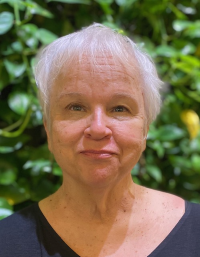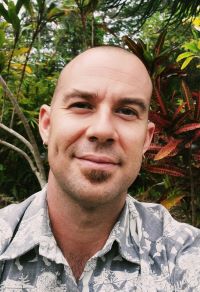Enter your email to receive the CareQuest newsletter:
January 5, 2023
In 2009, in the wake of a major national recession, Hawai‘i — like many other states — grappled with the difficult decision on what to cut from its state budget. Unfortunately, non-emergency dental benefits for adults on Medicaid were on the “cut” list, leaving hundreds of thousands of adults in Hawai‘i without access to preventive and restorative dental care.
More than a decade later, that reality is about to change.
2022 brought a major victory for Medicaid beneficiaries in Hawai‘i with the passage of a state budget that reinstated these crucial dental benefits. Beginning earlier this week, on January 1, 2023, more than 250,000 adult Medicaid recipients in Hawai‘i became eligible to receive reinstated benefits for comprehensive oral health care, which is vital to overall health and wellness.

“I’ve heard countless stories of people who have been rejected for jobs, can’t chew food, wait months to be seen by a dentist, can’t live a full life, or are pulling out their own teeth with pliers because they haven’t been able to access dental care,” says Nancy Partika, RN, MPH, the OPEN (Oral Health Progress and Equity Network) grassroots representative for Hawai‘i and a member of the Hawai‘i Oral Health Coalition (HOHC). “Now dental care will be offered freely as a right to care for so many who have struggled for so long to access the dental care they need and deserve.”
But how did Hawai‘i get there? What did the years-long fight look like to reinstate these critical benefits? It wasn’t easy, but many advocates on the ground played a major role in this victory. And as we –— CareQuest Institute, advocates, patients, and other key stakeholders — continue to push for all states to include adult dental benefits in their state Medicaid programs, it’s important to learn more about Hawai‘i’s path to success and gather lessons learned.
The Root of Oral Health Advocacy in Hawai‘i
Partika admits that her strong interest in oral health did not emerge until 2015. Like many, she hadn’t fully appreciated the important connection between oral health and overall health.
“It wasn’t until 2016 that I got involved in oral health specifically. I was a leader for a local public health organization when our University of Hawai‘i medical school contact suggested that we start looking at opportunities to do more around oral health issues,” says Partika. “At the time, I didn't really see the connection because, until then, I considered oral health as dentistry and public health as everything else.”

Patrick Donnelly, the statewide oral health coalition manager for the Hawai‘i Public Health Institute and the Hawai‘i Oral Health Coalition, started appreciating the importance of oral health when he was a rural-based Head Start health specialist. He realized that oral health seemed to always be at the bottom of the priority list for families and children, especially those on Medicaid. He also realized the importance of access to dental care for whole families.
“There was a study of Head Start children that showed that a staggering amount of kids come into preschool with tooth decay already. So we set to work with these children, but then realized that the parents didn’t have access to dental care,” says Donnelly. “This really is a family issue because how can a parent adequately support their child in care when they don’t even have the opportunity themselves?”
The Path to Reinstating Dental Benefits
In 2016, the DentaQuest Foundation (now operating as CareQuest Institute for Oral Health) began to fund Hawai‘i nonprofits to work specifically on the significant disparities in oral health. The work included organizing meetings statewide around oral health and disparities, locating and sharing disparities-related oral health data and information, and mobilizing supporters in affected communities around oral health. As that work progressed, efforts to reinstate dental benefits became better organized in 2018, as advocates, under the newly-established Hawai‘i Oral Health Coalition (HOHC), started building a statewide and diverse constituency around the issue. Effectively, they began working together as a more unified group. CareQuest Institute has continued to fund the Hawai’i Children’s Action Network and the Hawaii Public Health Institute, which operates HOHC, throughout this process.
In 2021, Partika and Donnelly, representing HOHC, approached the University of Hawai‘i’s School of Medicine and the Hawai‘i State Department of Health to collaborate on a longitudinal five-year retrospective study to analyze all emergency room (ER) visits) statewide for non-traumatic dental conditions. The study revealed that between 2016 and 2020, those dental-specific ER visits cost more than $38.7 million, with nearly half of those visits coming from adult Medicaid recipients. Between the ER study and significant visible community support, the push to reinstate an adult dental benefit regained momentum in the 2022 legislative session.
To prepare for legislative hearings, Partika, Donnelly, and other HOHC and community advocates worked tirelessly to make sure all supporters of the bill had the information and support they needed to effectively advocate for its passage before the legislature. They sent out regular reminders and updates on bill hearings and supplied testimony templates, talking points, and training, so everyone was supported and prepared.
The hard work paid off. For every bill hearing on adult dental benefits, 40 to 60 individuals and organizations testified in favor of the dental benefits bill.
“We had so many organizations across the state who signed on for support, and so many showed up to testify,” says Donnelly. “Going to these hearings, it was overwhelming to see all the people who were in support. It made the issue hard to ignore when you have testimony after testimony advocating for this. It really spoke to the scope and the severity of the problem.”
With the backing and advice of some legislative champions of the bill, the measure reverted from bill form to a state budget line item — a better way to guarantee these funds would be sustained year after year.
The long-term advocacy efforts came to fruition in May of 2022 when the Hawai‘i State Legislature approved the state budget, which included $25.9M for reinstating Medicaid adult dental benefits.
Next Step: Implementation
While advocates took time to celebrate the momentous occasion, they soon got back to work to focus on preparing for the implementation of the program.
“Getting the bill passed was the easy part compared to implementation,” says Partika. “Getting the funding is one thing, but doing a good job with it and making sure that we are measuring progress is even more important. Now we need to move implementation along and make it accountable, measurable, and responsive to Medicaid recipients.”
Advocates are now working with community dental leaders and other stakeholders to expand the dental workforce statewide, as well as identify ways to encourage dental providers to accept Medicaid in order for Hawai‘i to prepare for more than 250,000 Medicaid adult recipients seeking dental care.
“On some islands in Hawai‘i, you might have one office that’s open only one day a week in a town. We need more providers who take Medicaid, and we are exploring how to do that through incentive programs like increasing reimbursement and reducing administrative burdens,” says Donnelly. “And because we have a provider shortage, we want to think about how we can enhance the ability of the current workforce to be able to handle this influx. That could be through expansion of scope of practice for dental hygienists, or the use of dental therapy.”
The path forward will have its challenges, but the advocates have a clear vision.
“Above all,” Donnelly adds, “we need to work together and break down silos, because we are stronger together.”